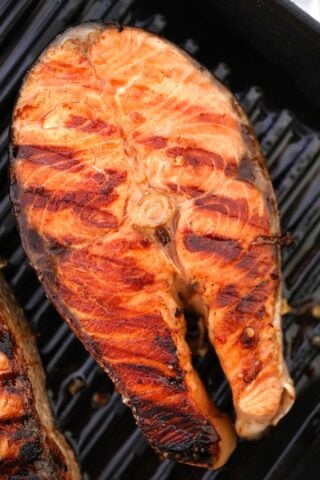Sauce For Salmon
This homemade Sauce for Salmon is one of the easiest and quickest recipes I make. It comes together in minutes with just a few simple ingredients, turning a basic fish dinner into something that tastes restaurant-quality. The butter and cream give it that silky texture that sticks perfectly to the salmon, adding so much flavor in every bite.
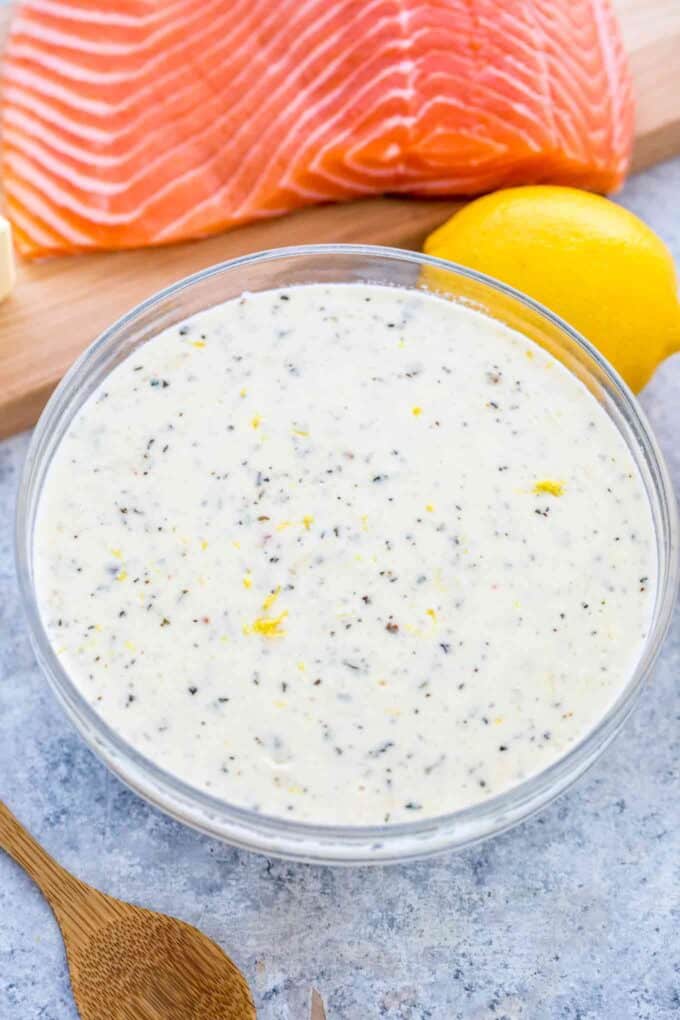
I first tried a sauce like this on salmon during a trip to a small restaurant in France. Of course, when I got home, I had to recreate it. After testing and tweaking the herbs, spices, and amounts many times, I finally landed on the version I use today. Honestly, it turned out even better than the one I had in France. This has become my favorite sauce to pair with salmon because it is buttery, creamy, and gives that melt-in-your-mouth finish, just like my Bearnaise sauce.
Table of contents
Whenever I find a sauce that’s creamy, easy, and works for dinner in a flash, it pretty much earns a permanent spot in my kitchen. My Alfredo sauce has been that for years, and now this salmon sauce is right up there with it. It’s made with just a few pantry staples, and once I started using it, I stopped bothering with any other salmon sauces.
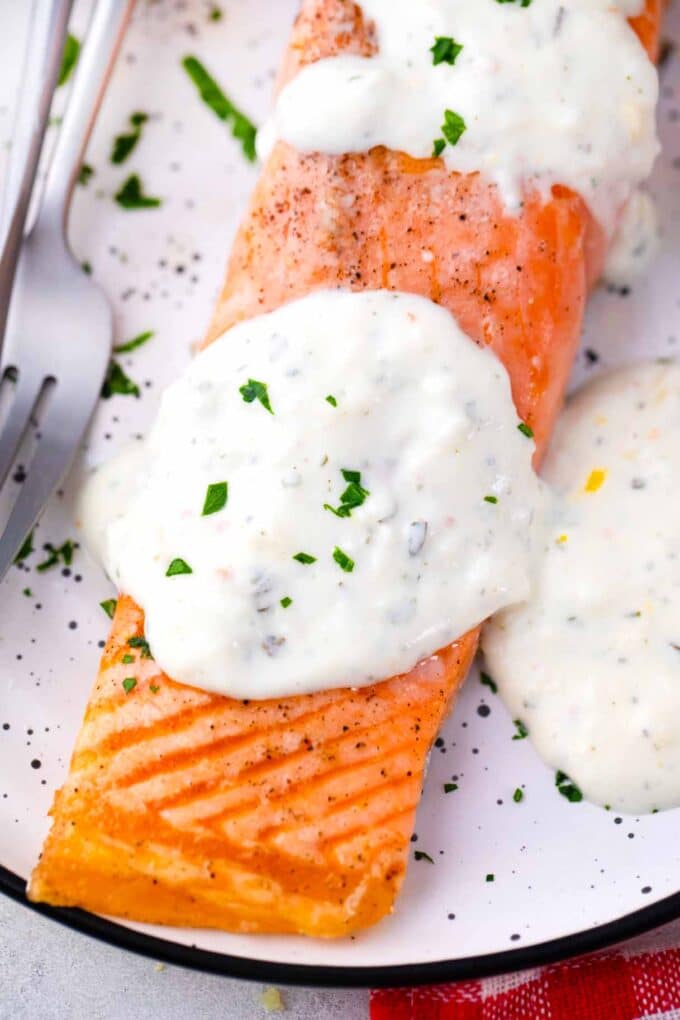
Why you will love this recipe
- No fancy steps here, just simple and tasty: This is not one of those complicated sauces. It’s for home cooks like me who want a rich and creamy sauce that is ready fast with pantry staples like butter, garlic, and lemon.
- Perfect for salmon lovers: It’s for busy folks, seafood lovers, and families who want to make salmon taste elevated without spending hours in the kitchen.
- The taste is creamy, a little zesty, and full of flavors: This sauce is all about balance. The butter and cream bring richness, the lemon and garlic add a zesty brightness, and the dried herbs and Parmesan create that savory layer that sticks to the fish.
- A no-fail sauce that I trust: I whisk butter and flour, pour in cream, stir in garlic, lemon, and herbs, and finish with Parmesan. It always turns out smooth and creamy, making it one of those recipes I know I can trust any night of the week.
What you will need
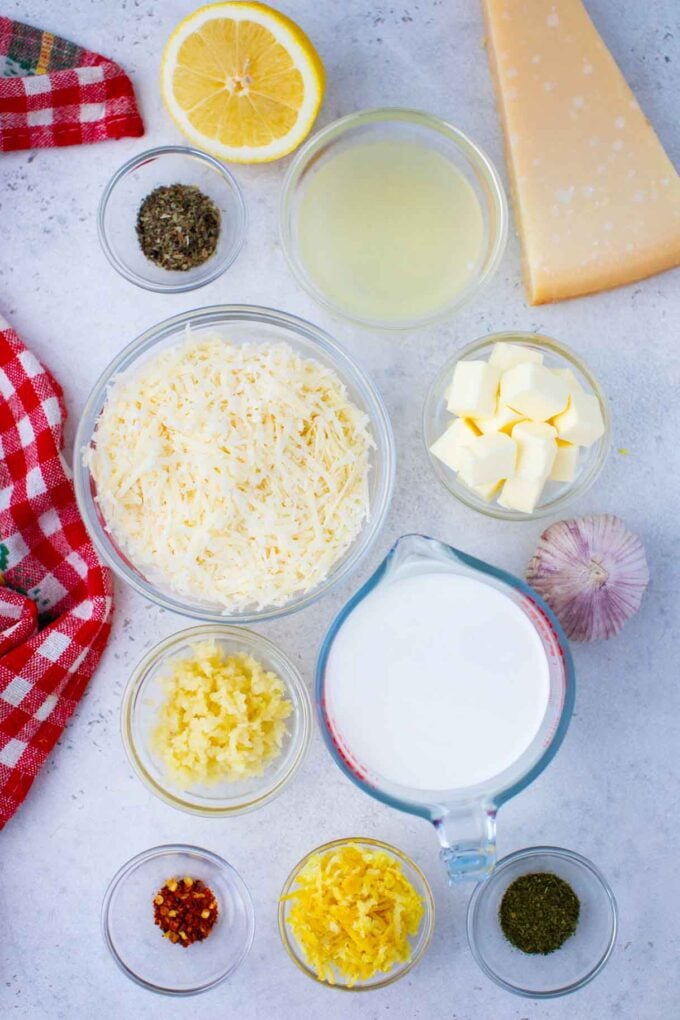
- Butter – I use unsalted butter so I can control how much saltiness is in the sauce.
- Cream – The cream along with the butter makes this sauce super creamy and rich.
- Parmesan cheese – I like using freshly grated for a salty and rich flavor.
- Flour – All-purpose flour is what I use just to thicken the sauce.
- Dried basil – For a blend of anise, pepper licorice, and mint with a slight taste of sweetness.
- Dried parsley – This herb offers a mild herbal flavor with a slight taste of citrus and a grassy earthy background.
- Red pepper flakes – Adds a kick of spiciness.
- Lemon juice and zest – To give your sauce a fresh and tangy kick.
- Minced garlic – Better than garlic powder because it is richer with a slightly sweet taste.
- Salt and freshly ground black pepper – To taste.
How to make
1. Heat the skillet: First, I melt the butter in a large skillet over medium heat.
2. Add the flour: I sprinkle in the flour and whisk it while letting it cook for about one minute.
3. Add the cream: I slowly pour in the cream while stirring, adding just a little at a time to keep the sauce smooth.
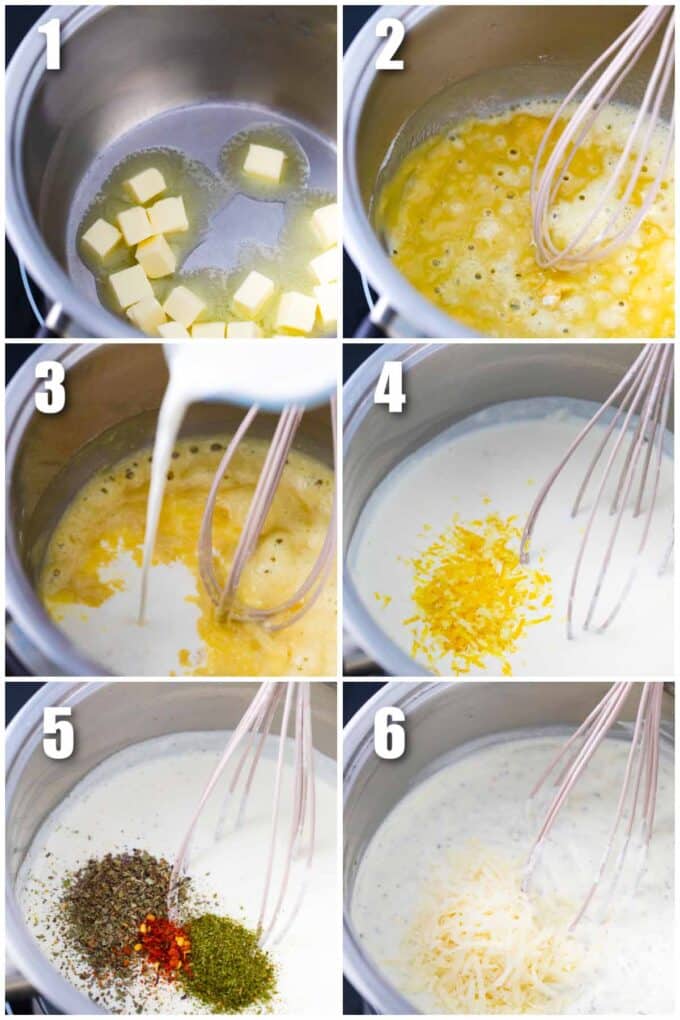
4. Add the lemon: I stir in the lemon juice and lemon zest at the end to brighten up the sauce.
5. Mix in the rest: I add the dried herbs, salt, and pepper, then give everything a good stir.
6. Simmer the sauce: I let the sauce come to a gentle simmer, then lower the heat and stir in the Parmesan cheese until it melts completely. Serve it right away!
Expert tip
Adding parmesan cheese to sauce
The best part about this sauce is how creamy and smooth it turns out when I use fresh Parmesan cheese. I always grate it right when I start the recipe, which makes all the difference. I learned that pre-grated cheese tends to clump because it is drier, so I keep that for sprinkling on top of dishes. When I add the Parmesan, I make sure the sauce is off the heat or on very low, then stir it in a little at a time until it melts perfectly. It is a small step, but it guarantees the sauce stays silky and never clumpy.
More tips to consider:
- I can make this sauce vegan by using plant-based butter and cream. It still turns out rich and creamy.
- I have tried all kinds of butter for this recipe, and if I use salted butter, I just cut back a little on the added salt.
- While the sauce is great served right away, I like to let it chill for a bit because the herbs and seasonings blend together even more.
- I always keep the heat low and avoid overcooking, since cream can separate if it gets too hot.
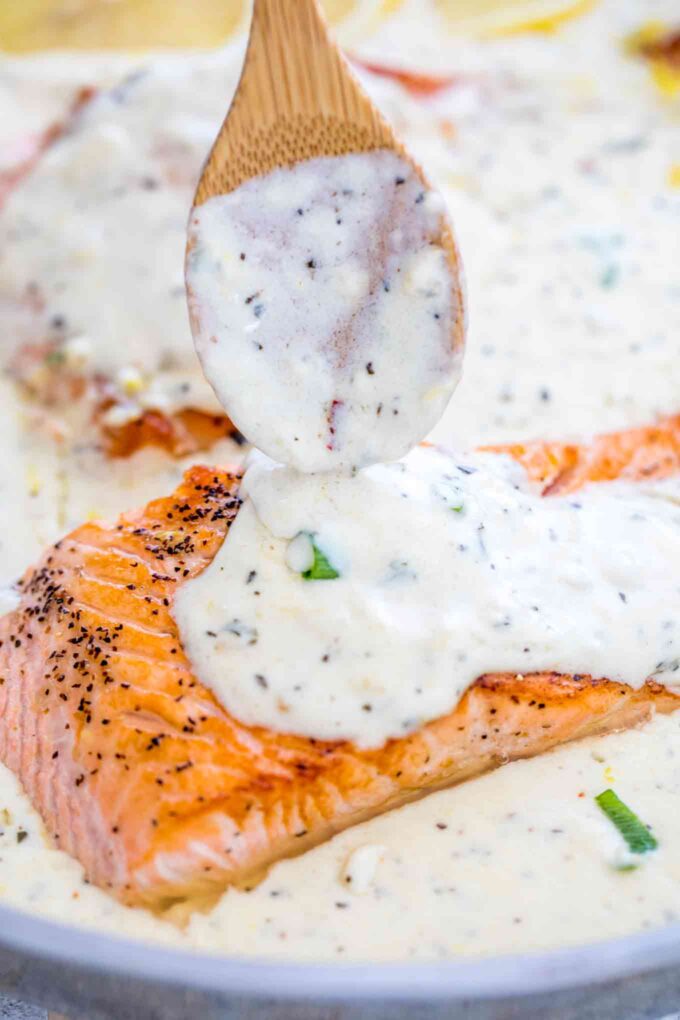
Recipe variations and add-ins:
- Make it spicier: If I want more heat, I add extra red pepper flakes or a pinch of cayenne pepper. It brings a gentle warmth to the sauce.
- Add some wine: I like to stir in about a quarter cup of good white wine. It adds a deeper and rich flavor to the sauce.
- Lemony sauce: For more lemon flavor, I add a couple of lemon wedges to the sauce while it simmers.
- Fresh herbs: I sometimes swap the dried herbs for fresh ones. They give the sauce a softer and milder herb taste.
- Extra creamy: When I want the sauce extra rich, I add one more tablespoon of butter and cream. It turns out even silkier and creamier.
- Substitute the Parmesan cheese: I love using freshly grated Parmesan, but when I want something different, I swap it for Romano, Gruyere, Asiago, or Grana Padano. They all melt nicely and add their own rich flavor.
Serving suggestions
When I make this sauce, I love spooning it over my grilled salmon skewers and serving it with a side of fresh bread. My Amish white bread recipe is perfect for soaking up every last bit of sauce. I also use this sauce instead of tartar sauce on my McDonald’s fish sandwich for my kids. It works great as a dipping sauce for veggies like roasted broccoli or carrot sticks, and I have even simmered homemade shrimp cakes or crab cakes right in the sauce for a nice seafood dinner.
For a hearty meal, I pour it over salmon patties and serve them with creamy mashed potatoes and asparagus on the side. It turns an ordinary meal into something my whole family gets excited about.
How to store leftovers
- Refrigerate: I keep it in a glass jar with a lid in the fridge. It stays good for up to five days.
- Freezing: To freeze, put it into a freezer bag or freezer-safe container and it will stay good for up to three months.
- Defrost: I just move it to the fridge the night before I plan to use it.
- Reheating: You can reheat it on the stove while whisking for several minutes.
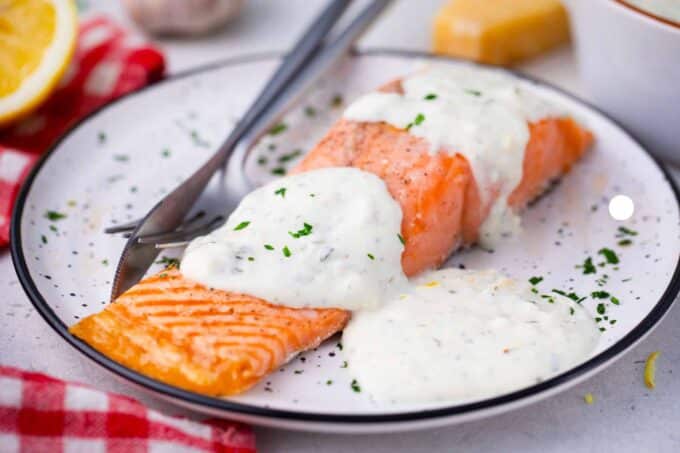
Frequently asked questions
This can happen if you accidentally put too much liquid in the sauce. But it is easy to fix, just cook it a bit longer to let it reduce. If it is still too runny, make a roux with a tablespoon of softened butter and 1/2 tablespoon of flour and whisk it in. Another option is to stir in more cheese.
On the other hand, if it is too thick, you can add some liquid to it. Use 1-2 tablespoons of broth, white wine, water, or cream. This will thin it out. Just remember to add the ingredients gradually.
There are quite a few reasons why dairy based sauce might curdle. One of it is maybe the there was not enough fat present, this usually happens when using fat-free or low-fat products. Another reason is cooking the sauce over high heat, a dairy based sauce should never get to the boiling point. If you are using an acid like wine, made sure its fully reduced before adding the dairy. Lastly, salt can also curdle the sauce, so wait until the very last second to season it.
Thankfully curdled sauce is fixable. Add it to a pan over medium heat, and bring it to a bubbling simmer, but not boiling. Add 1/4 cup of liquid (water, milk, or broth), and whisk vigorously and constantly for 1-2 minutes, until the sauce is again smooth and glossy. If needed add more liquid, a little at a time.
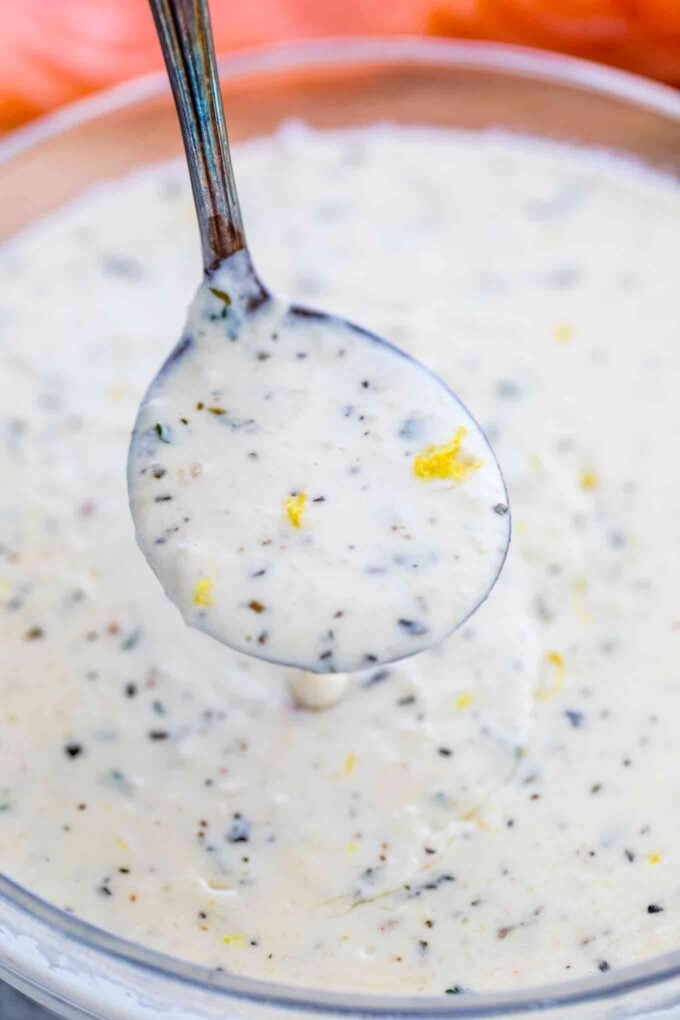
More salmon recipes:
Loved this recipe? I’d love to hear from you! 💛 Leave a 5-star rating ⭐️ in the recipe card below and share your thoughts in the comments – I read and appreciate every single one!
Let’s stay connected! Follow me on Facebook, Instagram, Pinterest, and YouTube for more delicious, sweet and savory recipes. Have a question? Ask in the comments, and I’ll be happy to help! 😊 with love Catalina!
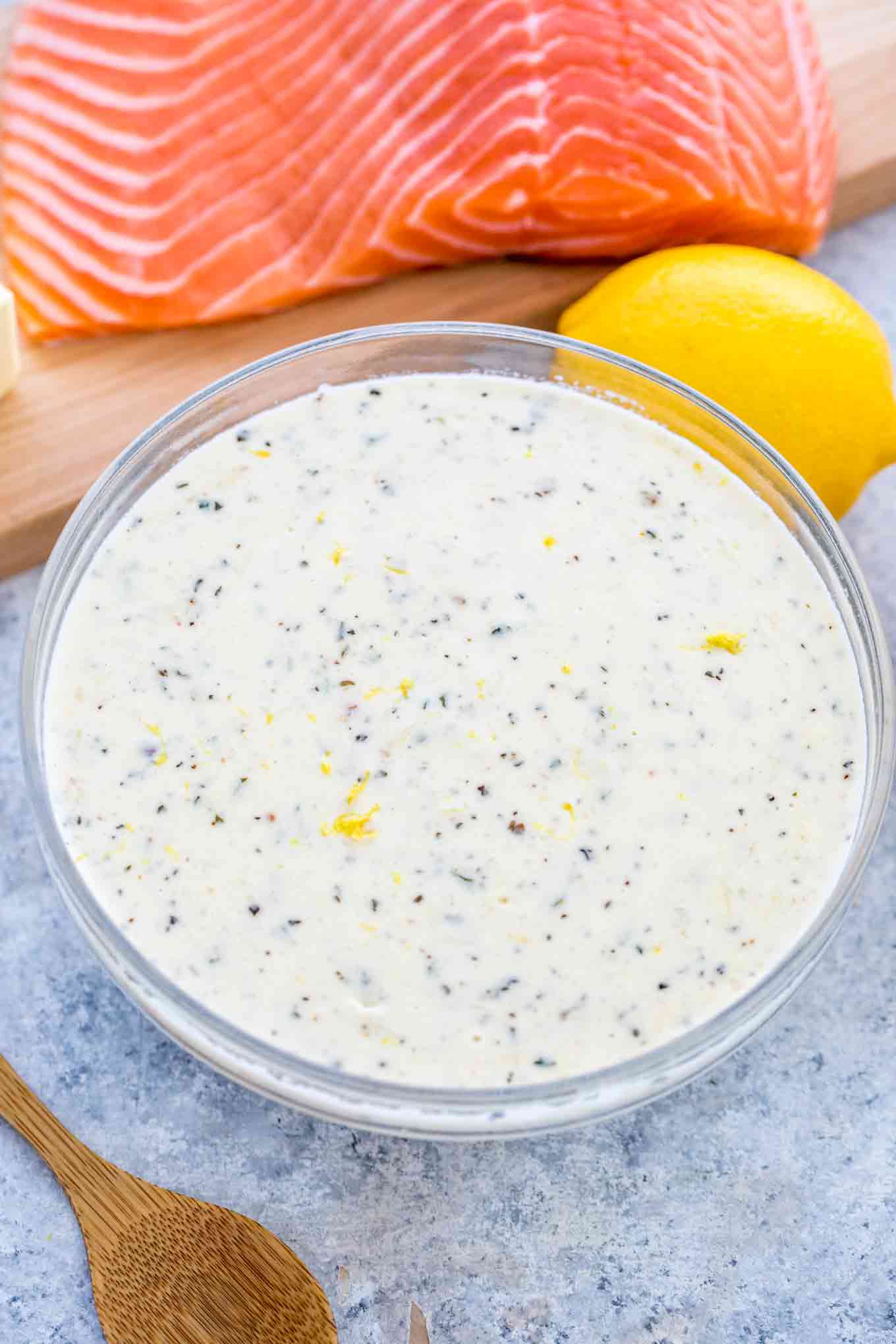
Sauce for Salmon
Ingredients
- 2 tablespoons butter unsalted
- 2 tablespoons all-purpose flour
- 2 1/2 – 3 cups light cream
- 4 cloves minced garlic
- 2 tablespoons lemon juice
- 1 tablespoon lemon zest
- 1 teaspoon dried basil
- 1 teaspoon dried parsley flakes
- 1/4 teaspoon red pepper flakes
- salt and fresh ground pepper to taste
- 1 cup Parmesan cheese grated
Instructions
- Over medium heat, place a large skillet and add butter.
- Once the butter is melted and sizzling, add the flour, and whisk well to combine while cooking. Let it cook for about 1 minute while stirring.
- Next, add slowly the light cream and continue to stir. Make sure not to pour the cream all at once, instead do it slowly.
- Then, add garlic, lemon juice, lemon zest, dried herbs, salt, and pepper.
- Once the sauce simmers, reduce heat to low and add shredded Parmesan cheese to the mixture. Stir for a few seconds until the cheese fully melts.
- Serve the sauce.
Video
Notes
Adding parmesan cheese to sauce
The best part about this sauce is how creamy and smooth it turns out when I use fresh Parmesan cheese. I always grate it right when I start the recipe, which makes all the difference. I learned that pre-grated cheese tends to clump because it is drier, so I keep that for sprinkling on top of dishes. When I add the Parmesan, I make sure the sauce is off the heat or on very low, then stir it in a little at a time until it melts perfectly. It is a small step, but it guarantees the sauce stays silky and never clumpy.More tips to consider:
- I can make this sauce vegan by using plant-based butter and cream. It still turns out rich and creamy.
- I have tried all kinds of butter for this recipe, and if I use salted butter, I just cut back a little on the added salt.
- While the sauce is great served right away, I like to let it chill for a bit because the herbs and seasonings blend together even more.
- I always keep the heat low and avoid overcooking, since cream can separate if it gets too hot.

